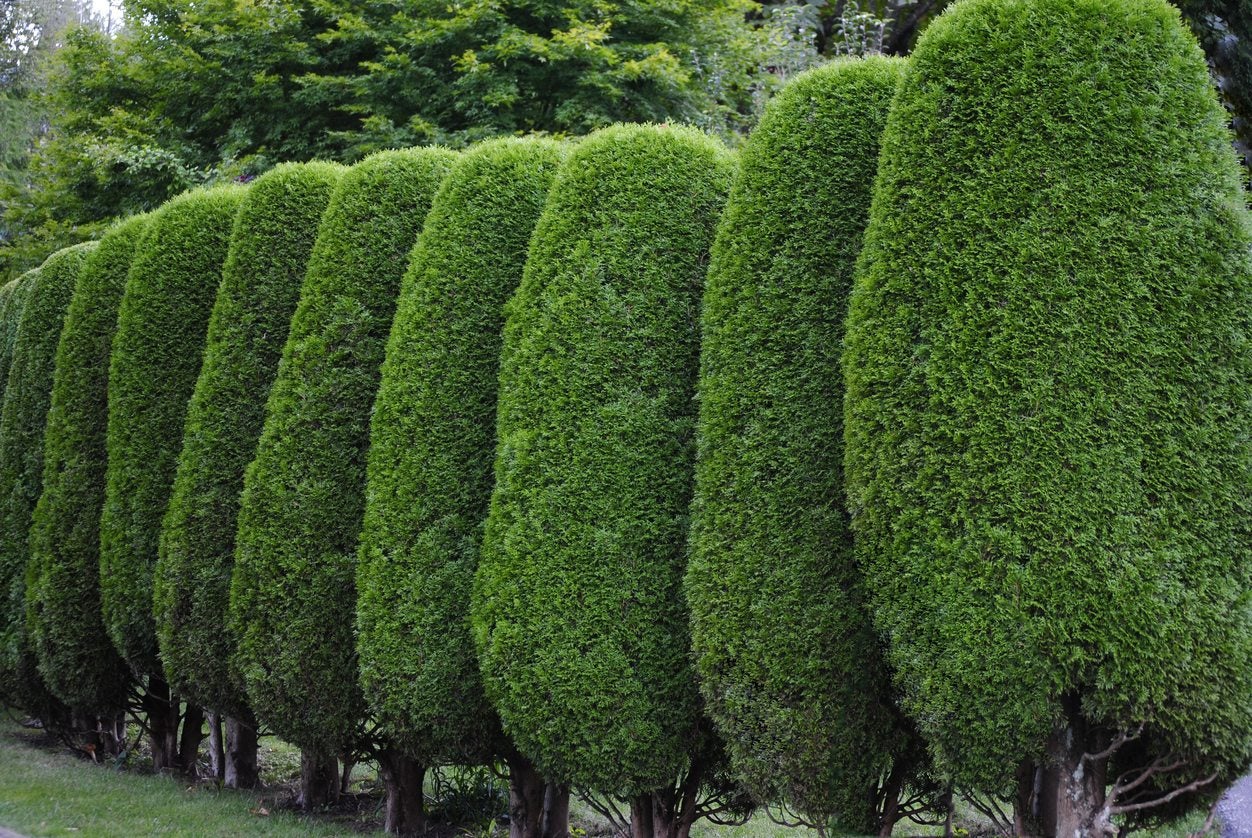Zone 8 Boundary Trees – Choosing Trees For Privacy In Zone 8

If you have close neighbors, a major road near your home, or an ugly view from your backyard, you may have thought about ways to add more privacy to your property. Planting trees that will grow into a living privacy screen is a great way to accomplish this goal. In addition to creating seclusion, a border planting can also help reduce noise and wind that reaches your backyard.
Be sure to select trees that are suited to your climate and to the characteristics of your property. This article will give you ideas for zone 8 boundary trees to choose from in planning an effective and attractive privacy screen.
Planting Trees for Privacy in Zone 8
Some homeowners plant a row of all one kind of tree as a privacy screen. Instead, consider planting a mix of different trees along a boundary. This will create a more natural appearance and will provide habitat for more types of wildlife and beneficial insects.
It is also not necessary to plant privacy trees in a straight line. For a less formal look, you can group trees in small clusters at different distances from your home. If you choose the locations of the clusters carefully, this strategy will also provide an effective privacy screen.
Whichever species or mix of species you choose, make sure you can provide your zone 8 privacy trees with a proper site that will support their health. Look into the soil type, pH, moisture level, and amount of sun each species requires, and choose those that are a good match for your property.
Before planting trees for privacy in zone 8, ensure that the trees will not interfere with power lines or other structures and that their size at maturity is a good fit for the size of your yard. Proper planting site selection will help your trees stay healthy and disease free.
Broadleaf privacy trees for zone 8
- American holly, Ilex opaca (evergreen foliage)
- English oak, Quercus robur
- Chinese tallow tree, Sapium sebiferum
- Hedge maple, Acer campestre (note: considered invasive in some areas-- check with local authorities)
- Lombardy poplar, Populus nigra var. italica (note: a short-lived tree that is considered invasive in some areas-- check before planting)
- Possumhaw, Ilex decidua
Conifer privacy trees for zone 8
- Leyland cypress, Cupressocyparis leylandii
- Atlantic white cedar, Chamaecyparis thyoides
- Eastern red cedar, Juniperus virginiana
- Bald cypress, Taxodium distichum
- Dawn redwood, Metasequoia glyptostroboides
If you want to establish a privacy screen as quickly as possible, you may be tempted to plant trees closer together than recommended. Avoid excessively close spacing because it can lead to poor health or the death of some of the trees, eventually creating gaps in your screen. Instead of planting trees too close together, choose fast-growing trees like dawn redwood, Lombardy poplar, Leyland cypress, Murray cypress, or hybrid willows.
Sign up for the Gardening Know How newsletter today and receive a free copy of our e-book "How to Grow Delicious Tomatoes".
Ilana Goldowitz Jimenez is a scientific and agricultural writer with a B.S. in Plant Sciences from Cornell University and a PhD in Chemical Biology and Infectious Disease from Harvard University.